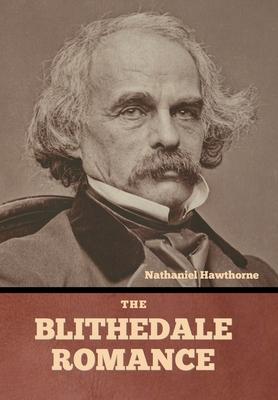The Blithedale Romance

The Blithedale Romance
The Blithedale Romance (1852) is a novel by American author Nathaniel Hawthorne. It is the third major "romance", as he called the form. Its setting is a utopian farming commune based on Brook Farm, of which Hawthorne was a founding member and where he lived in 1841. The novel dramatizes the conflict between the commune's ideals and the members' private desires and romantic rivalries.
Following its publication, The Blithedale Romance was received with little enthusiasm by contemporary critics. As one reviewer claims, the preface which is merely a disclaimer of sorts, "is by no means the least important part of it". In fact, to many reviews this simple, non-fictional disclaimer seems to be the most important part of the book. Many reviews refer to the preface of the novel and express skepticism in regard to Hawthorne's plea contained therein for the reader not to take the characters and occurrences of the novel as representative of real-life people and events. They claim that there is simply too much correlation between fiction and nonfiction. One reviewer states "so vividly does [Hawthorne] present to us the scheme at Brook Farm, to which some of our acquaintance were parties, so sharply and accurately does he portray some incidents of life there, that we are irresistibly impelled to fix the real names of men and women to the characters of his book". As such they read into what Hawthorne writes about characters that have associated real-life figures.
However, other reviews, while stating that there is correlation between the fiction of the novel and reality, these correlations should not lead to association of fiction and non-fiction. One review states "we can recognize in the personages of his Romance individual traits of several real characters who were [at Brook Farm], but no one has his or her whole counterpart in one who was actually a member of the community. There was no actual Zenobia, Hollingsworth, or Priscilla there, and no such catastrophe as described ever occurred there".
In Hawthorne (1879), Henry James called it "the lightest, the brightest, the liveliest" of Hawthorne's "unhumorous fictions", while literary critic Richard Brodhead has described it as "the darkest of Hawthorne's novels."
A great deal of modern criticism centers around the relation between fiction and non-fiction as well. Critics believe that when viewed as representative of Hawthorne's own life and beliefs, "The Blithedale Romance" provides insight into the
PRP: 247.59 Lei
Acesta este Pretul Recomandat de Producator. Pretul de vanzare al produsului este afisat mai jos.
222.83Lei
222.83Lei
247.59 LeiLivrare in 2-4 saptamani
Descrierea produsului
The Blithedale Romance (1852) is a novel by American author Nathaniel Hawthorne. It is the third major "romance", as he called the form. Its setting is a utopian farming commune based on Brook Farm, of which Hawthorne was a founding member and where he lived in 1841. The novel dramatizes the conflict between the commune's ideals and the members' private desires and romantic rivalries.
Following its publication, The Blithedale Romance was received with little enthusiasm by contemporary critics. As one reviewer claims, the preface which is merely a disclaimer of sorts, "is by no means the least important part of it". In fact, to many reviews this simple, non-fictional disclaimer seems to be the most important part of the book. Many reviews refer to the preface of the novel and express skepticism in regard to Hawthorne's plea contained therein for the reader not to take the characters and occurrences of the novel as representative of real-life people and events. They claim that there is simply too much correlation between fiction and nonfiction. One reviewer states "so vividly does [Hawthorne] present to us the scheme at Brook Farm, to which some of our acquaintance were parties, so sharply and accurately does he portray some incidents of life there, that we are irresistibly impelled to fix the real names of men and women to the characters of his book". As such they read into what Hawthorne writes about characters that have associated real-life figures.
However, other reviews, while stating that there is correlation between the fiction of the novel and reality, these correlations should not lead to association of fiction and non-fiction. One review states "we can recognize in the personages of his Romance individual traits of several real characters who were [at Brook Farm], but no one has his or her whole counterpart in one who was actually a member of the community. There was no actual Zenobia, Hollingsworth, or Priscilla there, and no such catastrophe as described ever occurred there".
In Hawthorne (1879), Henry James called it "the lightest, the brightest, the liveliest" of Hawthorne's "unhumorous fictions", while literary critic Richard Brodhead has described it as "the darkest of Hawthorne's novels."
A great deal of modern criticism centers around the relation between fiction and non-fiction as well. Critics believe that when viewed as representative of Hawthorne's own life and beliefs, "The Blithedale Romance" provides insight into the
Detaliile produsului








